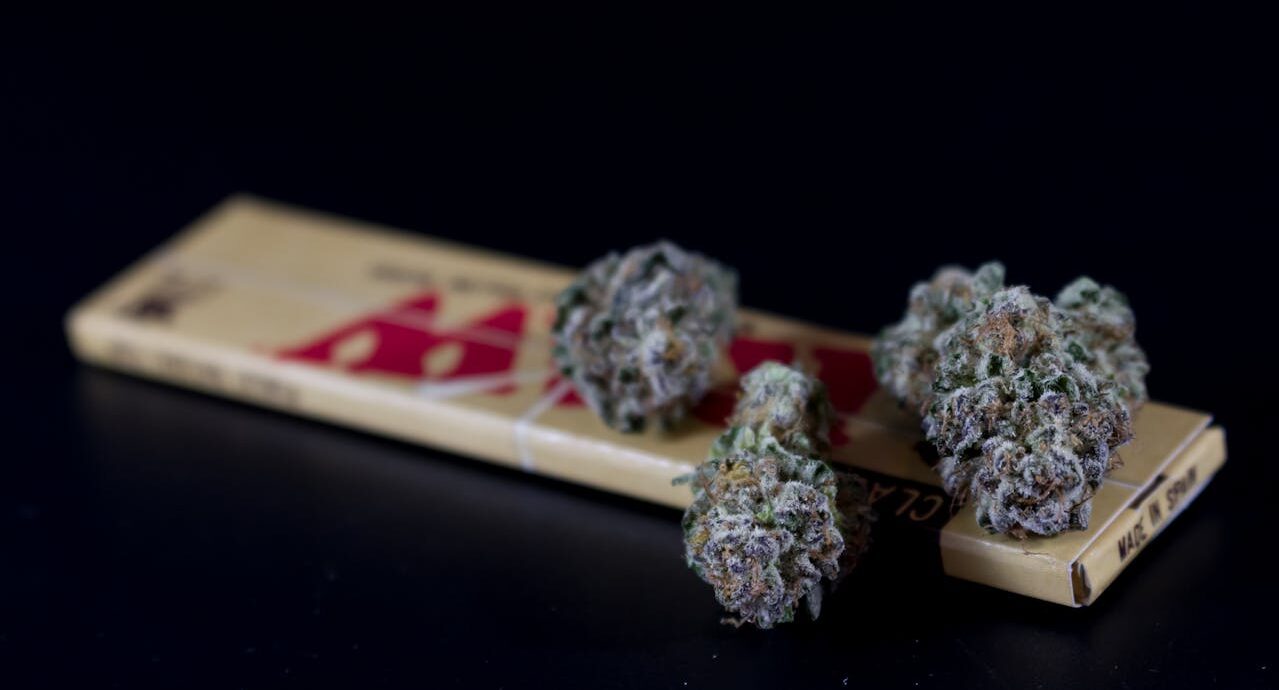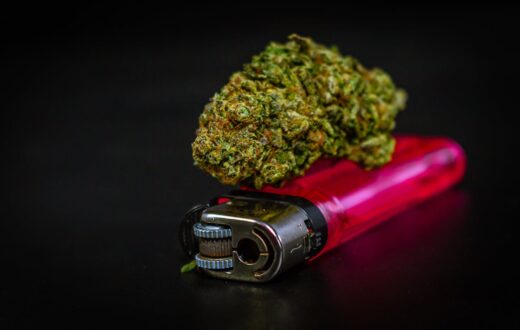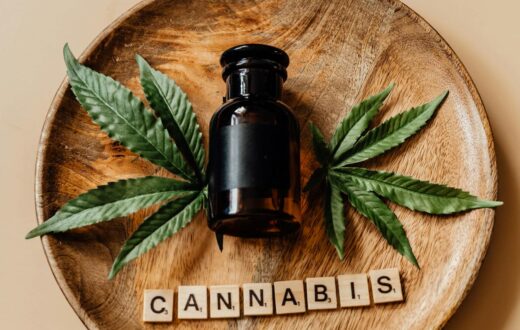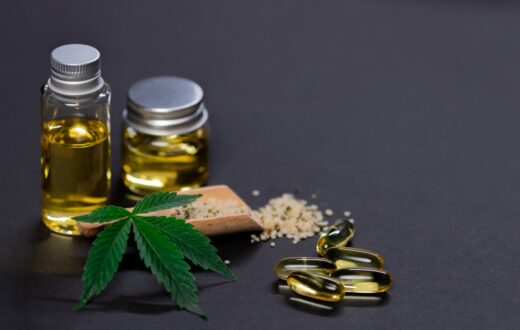Introduction to Cherry Pie OG
Cherry Pie OG, commonly referred to as Cherry Pie, is a hybrid cannabis strain that has gained fame among growers and users alike for its unique blend of flavors, potent effects, and appealing lineage. This strain is the offspring of two well-regarded parent strains: Grand Daddy Purple and Durban Poison. This combination contributes not only to its compelling flavor profile but also to its balanced effects, making it a preferred choice in the cannabis community.
When exploring how to grow Cherry Pie OG strain, cultivators will quickly discover that its aromatic properties form a significant part of its charm. The strain offers a delightful blend of sweet cherry and earthy undertones, which appeal to both recreational users seeking a flavorful experience and medicinal users seeking relief. The rich, fruity notes are particularly enticing, resembling the scent of freshly baked cherry pie, which is how the strain acquired its whimsical name.
The effects of Cherry Pie OG are also notable. Users often report a calming high that allows for relaxation without too much sedation, making it suitable for various occasions and times of day. This versatility enhances its popularity, particularly among those who enjoy cannabis for both recreational and therapeutic purposes. For medicinal users, Cherry Pie is often sought after to help alleviate stress, anxiety, and occasionally chronic pain, showcasing its multifaceted appeal.
Given these factors, it’s no surprise that many growers are keen to learn how to cultivate Cherry Pie OG with success. With proper care and attention, this strain not only flourishes in suitable environments but also produces bountiful yields that reward dedicated horticulturists. As such, it stands out as an exemplary selection for those seeking to elevate their cannabis gardening endeavors.
Why Choose Cherry Pie OG for Your Garden
Cherry Pie OG is increasingly becoming a popular choice among cultivators, thanks to its appealing characteristics and manageable growing requirements. One of the most significant benefits of this strain is its high-yield potential. When grown under optimal conditions, Cherry Pie OG can produce a substantial harvest, making it a fruitful addition to any garden. This economic advantage makes it particularly attractive to both novice and experienced growers alike.
Another compelling reason to choose Cherry Pie OG is its remarkable resin production. The strain is known for developing an impressive layer of trichomes, which not only enhances the bud’s potency but also contributes to its potent flavor profile. The resin’s abundance makes it an excellent candidate for those interested in extracting concentrates, providing an enriching experience through various consumption methods. The combination of high yields and substantial resin production can maximize the profitability of growers investing time and resources into this strain.
Additionally, Cherry Pie OG exhibits a level of pest resistance that can simplify the cultivation process. This characteristic is particularly beneficial for those who might lack extensive experience in pest management. The strain’s genetic resilience means that growers can focus on other aspects of cultivation without becoming overly preoccupied with pest control. Furthermore, it adapts well to various growing conditions, whether indoors or outdoors, making it a flexible option. With a suitable environment, growers can expect consistent results, regardless of whether they prefer a hydroponic setup or traditional soil cultivation.
In summary, the advantages of growing Cherry Pie OG are evident. Its high yields, resin production, and adaptability make it an enticing option for those looking to enhance their gardens. Learning how to grow Cherry Pie OG effectively can lead to an uptick in both quality and quantity, benefiting any cultivator’s portfolio.
Ideal Growing Conditions for Cherry Pie OG
To successfully cultivate the Cherry Pie OG strain, understanding its ideal growing conditions is paramount. Optimal temperature ranges play a crucial role in the health and productivity of the plants. Cherry Pie OG flourishes in environments where daytime temperatures persist between 70°F to 80°F (21°C to 27°C). Nighttime temperatures should ideally drop to around 10°F lower to ensure a healthy diurnal cycle, promoting optimal growth and cannabinoid development.
Humidity levels are another vital factor to consider when learning how to grow Cherry Pie OG. During the seedling and vegetative stages, a humidity level of around 60% to 70% is recommended. However, as the plants transition to the flowering stage, it is advisable to decrease humidity to approximately 40% to 50% to mitigate mold and mildew risks. Adequate airflow and ventilation systems are essential in maintaining these humidity levels while preventing stagnant air.
Soil type plays a significant role in root development and nutrient absorption. Cherry Pie OG thrives in well-draining, nutrient-rich soil with a slightly acidic pH level ranging from 6.0 to 6.8. Utilizing organic compost and specialized mixtures can provide essential nutrients that promote robust growth. Furthermore, the plant responds well to the incorporation of perlite or vermiculite, enhancing aeration and drainage.
Light is another critical component of the growing process. For indoor cultivation, Cherry Pie OG requires at least 18 hours of light daily during the vegetative phase, while transitioning to 12 hours of light during the flowering phase. If grown outdoors, selecting a location that receives ample direct sunlight is crucial for maximizing yield and potency. By adhering to these ideal growing conditions, cultivators can greatly improve their success rates with this unique strain.
Growing Cherry Pie OG from Seeds vs. Clones
When considering how to grow Cherry Pie OG strain, one of the primary decisions is whether to begin with seeds or clones. Each method brings its own advantages and disadvantages, impacting your overall growing experience and the quality of the final product. Starting with seeds offers a variety of genetic potentials, allowing growers to create a unique phenotype, while clones provide a more consistent and predictable outcome.
Germination is the first consideration when starting from seeds. The germination process involves soaking seeds, placing them in a growing medium, and ensuring suitable environmental conditions. Successful germination of Cherry Pie OG seeds can lead to robust seedlings, provided that the conditions are maintained accurately. On the other hand, using clones circumvents the germination phase entirely. Clones are cuttings taken from a mother plant with established roots, enabling faster growth and immediate flowering if positioned correctly within your growing setup.
Root development is another essential aspect to consider. Seedlings often take time to develop an extensive root system, which can lead to a longer wait for the first harvest. In contrast, clones come with a pre-developed root structure, providing a head start. This rapid establishment can lead to quicker flowering times and more efficient growth cycles, making clones an attractive option for those looking to maximize yield within a specified timeframe.
Moreover, consistency is a crucial factor. By growing from clones, growers can expect uniformity in the growth patterns, potency, and flavor profiles of Cherry Pie OG. Seeds, however, may produce a wider range of results, including variations in growth rates and flower characteristics. Therefore, the selection between seeds and clones depends on the grower’s preference for genetic diversity versus reliability. Ultimately, understanding how to grow Cherry Pie OG strain effectively hinges on weighing these elements and selecting the method that aligns with one’s growing objectives.
Nutrient Requirements for Cherry Pie OG
Growing the Cherry Pie OG strain successfully necessitates an understanding of its nutrient requirements throughout different stages of growth. Proper fertilization is crucial for optimizing growth and yield, as Cherry Pie OG can be sensitive to both deficiencies and excesses in essential nutrients. The primary macronutrients that marijuana plants require include nitrogen, phosphorus, and potassium, often abbreviated as N-P-K. These nutrients play pivotal roles: nitrogen supports vegetative growth, phosphorus aids in root development and flowering, while potassium is vital for overall plant health and resistance to disease.
During the vegetative stage, Cherry Pie OG will require higher nitrogen levels to promote lush foliage. A balanced fertilizer with higher nitrogen content, typically a ratio of 3-1-2, can be ideal. As the plant transitions into the flowering phase, the focus should shift to phosphorus and potassium. This can be achieved with a nutrient mix formulated with a higher phosphorus content, for instance, a 1-4-2 or 2-4-4 ratio.
Micronutrients also play a critical role in the overall health of the Cherry Pie OG strain. Essential micronutrients such as calcium, magnesium, iron, and sulfur facilitate various physiological processes, including photosynthesis and enzyme function. These can be incorporated through specific fertilizers or additives designed for cannabis plants.
Furthermore, a feeding schedule tailored to the growth stages is key. Generally, seedlings and young plants require a more diluted nutrient solution, gradually increasing concentration as they mature. Observing the plants closely helps to identify signs of nutrient deficiency, such as yellowing leaves or stunted growth, while symptoms like leaf burn often indicate over-fertilization.
Overall, understanding how to grow Cherry Pie OG strain entails a critical focus on providing the right nutrients at the appropriate times, supporting robust growth and successful blooming.
Pest and Disease Management
Growing the Cherry Pie OG strain can be a rewarding experience; however, it is essential to address potential threats from pests and diseases that could compromise the health and yield of your plants. Various pests such as aphids, spider mites, and fungus gnats can affect the growth of Cherry Pie OG, while common diseases like powdery mildew and root rot can hinder the development of healthy plants. Understanding how to manage these problems is crucial for successful cultivation.
Prevention is the first line of defense. Regularly inspecting your plants can help you identify any potential infestations early. Maintaining a clean growing area, removing any dead or decaying plant matter, and ensuring proper air circulation can reduce the risk of attracting pests and developing diseases. Additionally, keeping the environment at optimal humidity and temperature levels for the Cherry Pie OG strain greatly minimizes stress on the plants, making them less susceptible to infestations.
When it comes to treatment, there are both organic and chemical options available. For pest control, introducing beneficial insects such as ladybugs and predatory mites can naturally decrease pest populations. Neem oil, insecticidal soaps, and diatomaceous earth are effective organic solutions for managing pest infestations without harming the plant or the environment. On the other hand, chemical pesticides should be used carefully and as a last resort. Follow the product guidelines closely to minimize adverse effects.
Dealing with diseases requires a slightly different approach. For instance, to combat powdery mildew, maintain good air circulation and consider using organic fungicides, which can help control the spread. Root rot can be prevented by ensuring well-draining soil and avoiding overwatering, a critical aspect in maintaining the health of the Cherry Pie OG strain. By adopting these pest and disease management strategies, you can foster a thriving growth period for your plants.
Training Techniques for High Yields
Achieving maximum yields when cultivating the Cherry Pie OG strain requires a full understanding of various training techniques. By employing methods such as topping, Low-Stress Training (LST), and the Screen of Green (ScrOG) technique, growers can effectively enhance the yield and quality of their harvest.
One of the most effective techniques is topping. This method involves cutting off the top of the main stem, which encourages the plant to grow multiple top colas rather than focusing on a single main cola. To top Cherry Pie OG, observe the growth and select a healthy branch at around the fourth or fifth node where you will make the cut. Use clean scissors or pruning shears to ensure a clean cut, reducing the risk of infection. Following this method, the plant will devote energy to grow bushier and produce more buds.
Low-Stress Training (LST) is another beneficial technique for growing Cherry Pie OG. LST involves gently bending and tying down the plant’s branches to encourage horizontal growth. This exposes more of the plant to sunlight and helps develop multiple bud sites, significantly increasing yields. To effectively implement LST, begin early in the plant’s growth stage by softly bending the branches and using gardening ties to secure them in place, avoiding any breakage. Regularly check the ties and adjust as the plant continues to grow, ensuring even canopy exposure.
Lastly, the ScrOG method requires a mesh screen placed above the plants to guide their growth through openings in the screen. This technique effectively creates an even light distribution across the canopy, allowing the strains to develop uniformly. To set up ScrOG for Cherry Pie OG, place a screen at about two feet above the base of the plants, and as the plants grow up through the screen, weave the branches horizontally through the openings. This method not only maximizes light exposure but also promotes optimal bud formation.
Incorporating these training techniques specifically tailored for the Cherry Pie OG strain can significantly increase the overall yield, resulting in healthier plants and abundant harvests.
Harvesting Cherry Pie OG: Timing and Techniques
Harvesting Cherry Pie OG is a critical phase in the cultivation process, as it directly affects the quality and potency of the final product. The timing of the harvest is essential in order to capture the best flavor and effects. Generally, the ideal harvest period occurs when the trichomes on the buds begin to turn from clear to a milky white, with a small portion of them turning amber. This transformation typically occurs around 8 to 9 weeks of flowering, but it can vary depending on the specific phenotype and growing conditions. Growers should regularly monitor their plants, using a magnifying glass or jeweler’s loupe to assess the trichome development.
In addition to trichome color, other indicators of readiness include the overall appearance of the buds. Mature Cherry Pie OG buds will display a tight formation and rich coloration, signifying that they have reached their peak potential. Additionally, the pistils, or hairs, on the buds should have transitioned from white to a darker color, often reddish or orange, further confirming the appropriate time to harvest.
Once the decision to harvest has been made, the technique used is just as important as timing. It is best to cut the branches of the plants individually, starting from the top and working downward. This method allows for the more delicate buds to be handled with care, reducing the risk of damaging them. Following the cut, it is advisable to hang the branches upside down in a dark, ventilated space. This allows the buds to dry slowly and evenly, which is essential for preserving their flavor and potency.
After drying, the buds should be gently manicured, removing any excess leaves. Proper handling is critical to maintain the integrity of Cherry Pie OG and ensure that it remains enjoyable for consumers. By paying close attention to the signs of readiness and employing careful harvesting techniques, growers can maximize the quality of their Cherry Pie OG strain.
Conclusion: Enjoying Your Cherry Pie OG Strain
In summary, growing the Cherry Pie OG strain involves a combination of detailed planning, dedicated care, and a suitable environment. As we’ve discussed, optimal growth conditions include maintaining proper humidity and temperature levels, ensuring adequate light exposure, and nurturing the plants with appropriate nutrients. Additionally, pruning and training techniques are essential to foster healthy development and maximize yield. It’s vital for growers to monitor the health of the plants throughout the cultivation process, as this strain can be sensitive to environmental changes.
Once you have successfully harvested your Cherry Pie OG strain, the journey continues with storage and consumption. Proper curing is indispensable in enhancing the potency and flavor profile of the final product. Store your buds in moisture-controlled containers, away from light, to preserve their quality over time. The Cherry Pie OG strain is known for its delightful sweet and fruity aroma, making it a pleasurable experience for users. Sharing this unique strain with friends and fellow cannabis enthusiasts can foster a sense of community, as everyone can indulge in its rich, complex flavors.
We encourage growers to document their experiences with the Cherry Pie OG strain. Sharing tips, tricks, and insights can provide valuable information to others looking to cultivate this enjoyable strain. Whether you are a novice or an experienced cultivator, learning how to grow Cherry Pie OG strain can not only enhance your skills but also enrich your enjoyment of the cannabis plant. By following best practices for both growing and storing, you can ensure that your Cherry Pie OG provides the ultimate experience, showcasing the delightful benefits this strain has to offer.














